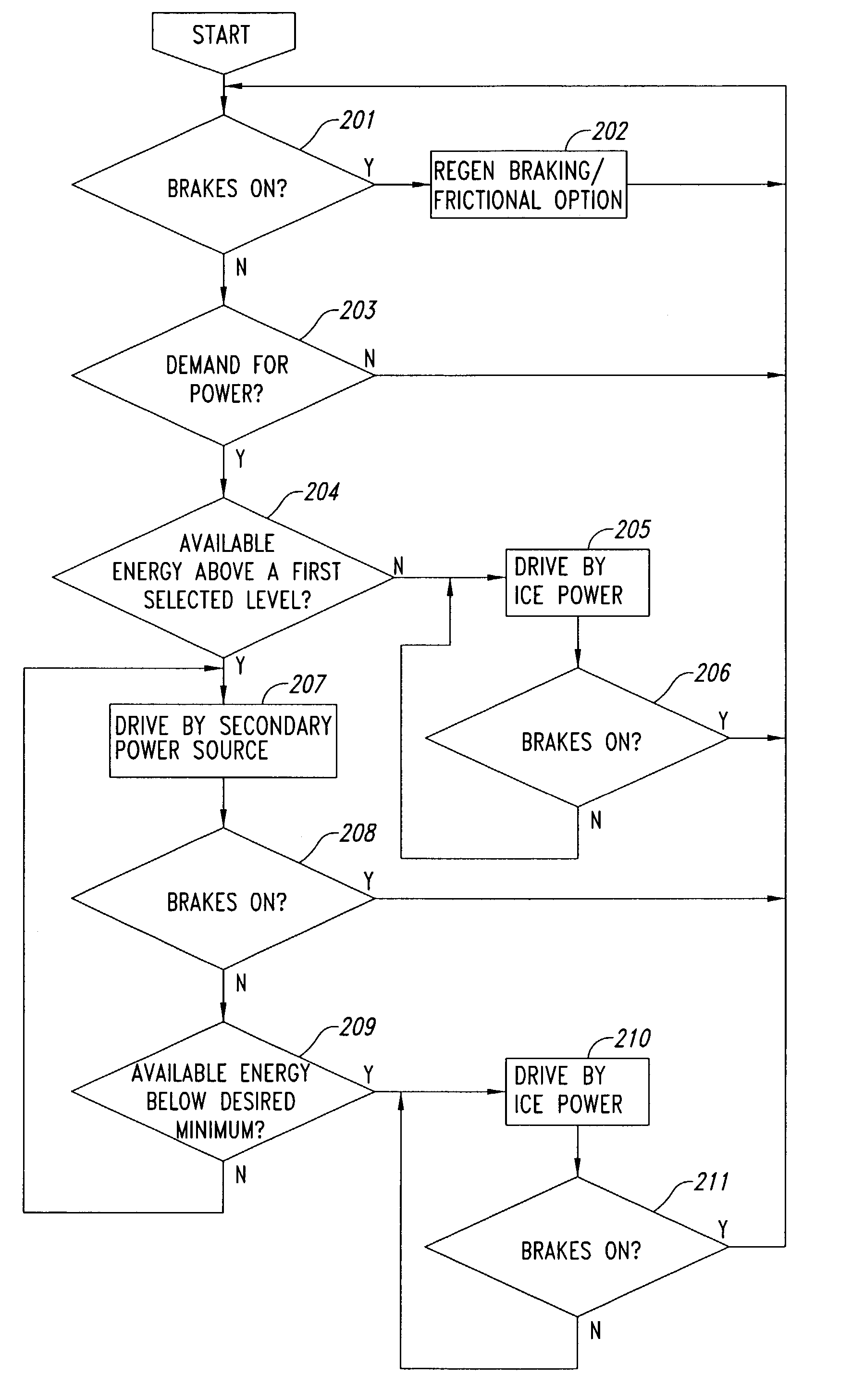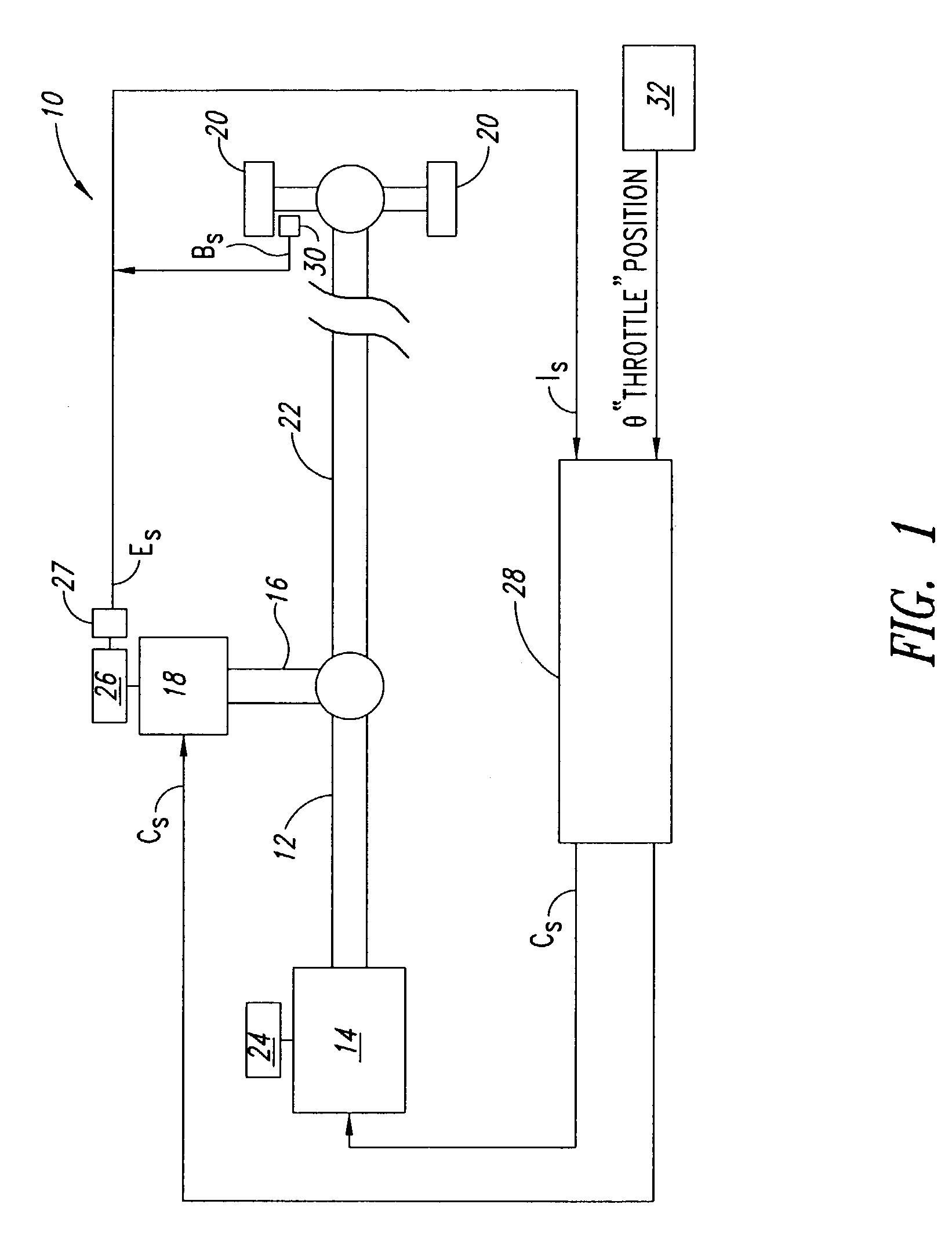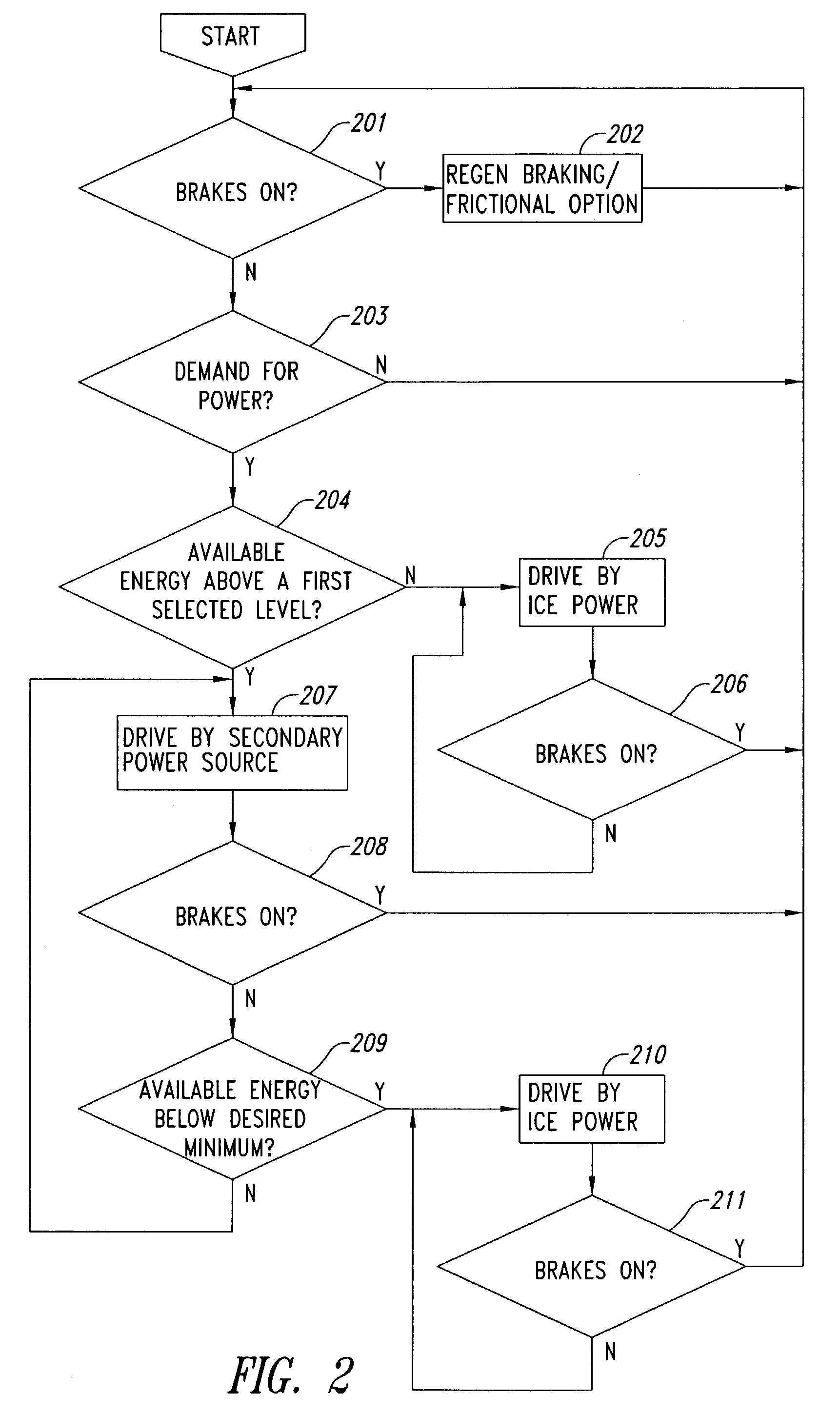Methods of operating a parallel hybrid vehicle having an internal combustion engine and a secondary power source
a hybrid vehicle and secondary power source technology, applied in the direction of engine-driven generators, machines/engines, electric generator control, etc., can solve the problems of delay in engine power use, and achieve the effect of reducing disruptions in the drivability of hybrid vehicles, quick supplemental torque to the vehicle, and increasing fuel savings
- Summary
- Abstract
- Description
- Claims
- Application Information
AI Technical Summary
Benefits of technology
Problems solved by technology
Method used
Image
Examples
Embodiment Construction
[0019]In the following description, certain specific details are set forth in order to provide a thorough understanding of various embodiments of the invention. However, one of ordinary skill in the art will understand that the invention may be practiced without these details. In other instances, well-known structures associated with hybrid vehicles have not been shown or described in detail to avoid unnecessarily obscuring descriptions of the embodiments of the invention.
[0020]The term “secondary power source,” as used herein, denotes a non-ICE power source capable of using energy captured during the vehicle's braking process. Thus, a secondary power source may include, for example, one or more electric or hydraulic motors. As is to be understood by one of ordinary skill in the art, other like systems may also be employed, and the secondary motors described herein do not limit the scope of the invention.
[0021]The term “secondary,” as used herein, is arbitrarily assigned, and does n...
PUM
 Login to View More
Login to View More Abstract
Description
Claims
Application Information
 Login to View More
Login to View More - R&D
- Intellectual Property
- Life Sciences
- Materials
- Tech Scout
- Unparalleled Data Quality
- Higher Quality Content
- 60% Fewer Hallucinations
Browse by: Latest US Patents, China's latest patents, Technical Efficacy Thesaurus, Application Domain, Technology Topic, Popular Technical Reports.
© 2025 PatSnap. All rights reserved.Legal|Privacy policy|Modern Slavery Act Transparency Statement|Sitemap|About US| Contact US: help@patsnap.com



